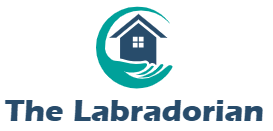The Illusion of Progress
Artificial intelligence is sold as innovation, as if it is a neutral tool. Corporations tell us it will improve efficiency, unlock growth, and reduce costs. Yet behind the marketing campaigns, the reality looks different. AI is being used to deepen exploitation, concentrate wealth, and dismantle workers’ rights. Instead of making life easier for the majority, it strengthens those already at the top.
Capitalism has always turned new technologies into tools for profit. From the factory machine to the algorithm, progress is defined by how much can be extracted from labor. AI follows the same path. It is not designed to liberate us but to control us.
The Workforce Under Pressure
For workers, the arrival of AI is rarely good news. Many face job cuts, role reductions, or new forms of surveillance. Algorithms measure productivity down to the second. Creative jobs are also targeted: writers, designers, and even programmers see their labor replaced by automated systems.
This does not mean fewer working hours or more freedom. It means increased precarity. Those who keep their jobs are pushed to compete with machines, working faster for less. Meanwhile, corporations celebrate “innovation” while hiding the human cost.
Capitalism’s Digital Prison
AI is also a tool of discipline. It shapes what we see online, manipulates consumer choices, and even predicts behaviors. Instead of a neutral machine, it becomes a weapon for those who own the data. States adopt it for policing, border control, and surveillance of dissent. Companies use it to track workers, reduce wages, and prevent organizing.
In this digital prison, freedom shrinks. The myth of “choice” is replaced by algorithmic nudging. Our lives become predictable patterns of consumption and work, optimized for profit.
Who Benefits?
The winners are easy to spot: major corporations, venture capitalists, and the political elite who serve them. They use AI to cut costs, avoid regulations, and expand their reach. Small businesses, independent creators, and communities are pushed aside. The promise of a fair economy collapses under the weight of monopoly power.
This is not progress. It is an enclosure. Just as land was once taken from peasants and privatized, digital spaces are now fenced off by algorithms. The commons becomes property, and our data becomes capital.
Resistance and Possibility
A radical left perspective means rejecting this narrative of inevitability. AI is not destiny; it is designed, coded, and owned. That means it can be resisted, transformed, or rebuilt. Workers must organize against layoffs and demand ownership over the tools they use. Communities must push for collective control of data, not corporate monopolies.
Technology can serve liberation if it is wrestled from the grip of profit. Imagine AI systems built by cooperatives, accountable to workers and communities, not shareholders. Imagine automation used to shorten the working week, not destroy livelihoods. The fight is not against machines but against the system that owns them.
The Myth of Neutral Innovation
AI is often portrayed as a “force of nature.” Politicians claim we must adapt, as if there is no alternative. But neutrality is a lie. Every algorithm carries choices—whose values, whose priorities, whose profits? In capitalism, the answer is clear: the few, not the many.
Radicals must tear down this myth and insist that technology is political. The story of AI is not one of progress, but of exploitation. Resistance means naming the enemy: corporate power, surveillance states, and the logic of endless profit.
A Different Future
We do not reject technology itself. We reject how it is owned and deployed. The future of AI does not have to be monopolies dictating our lives. It could be collective systems built around solidarity, not profit. This requires political struggle, not blind optimism.
The task is to reclaim imagination. Instead of accepting a world of surveillance and automation-for-profit, we can build one of freedom and equality. Platforms like Spinando remind us that tools can shape communities differently, but only if they are wrestled away from the logic of profit.
Conclusion
AI reveals capitalism’s true face: ruthless, extractive, and hostile to human dignity. But it also reveals a contradiction. The same tools used to exploit could, in another system, be used to free us from unnecessary labor. The choice is not technological but political. Either we let capital decide, or we fight for collective control.
In the age of AI, neutrality is impossible. The struggle is not only about machines. It is about power, ownership, and the future of society itself.

